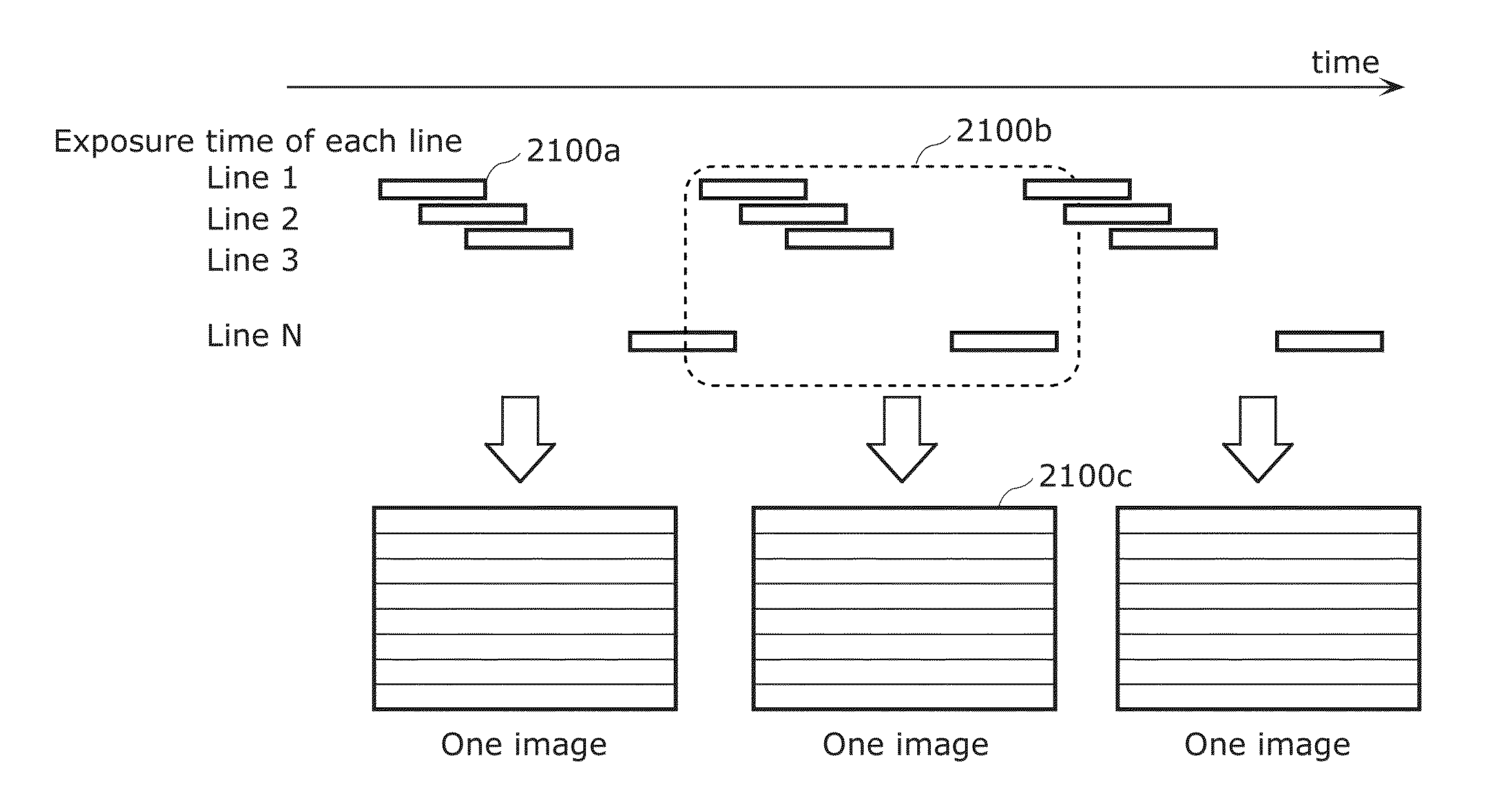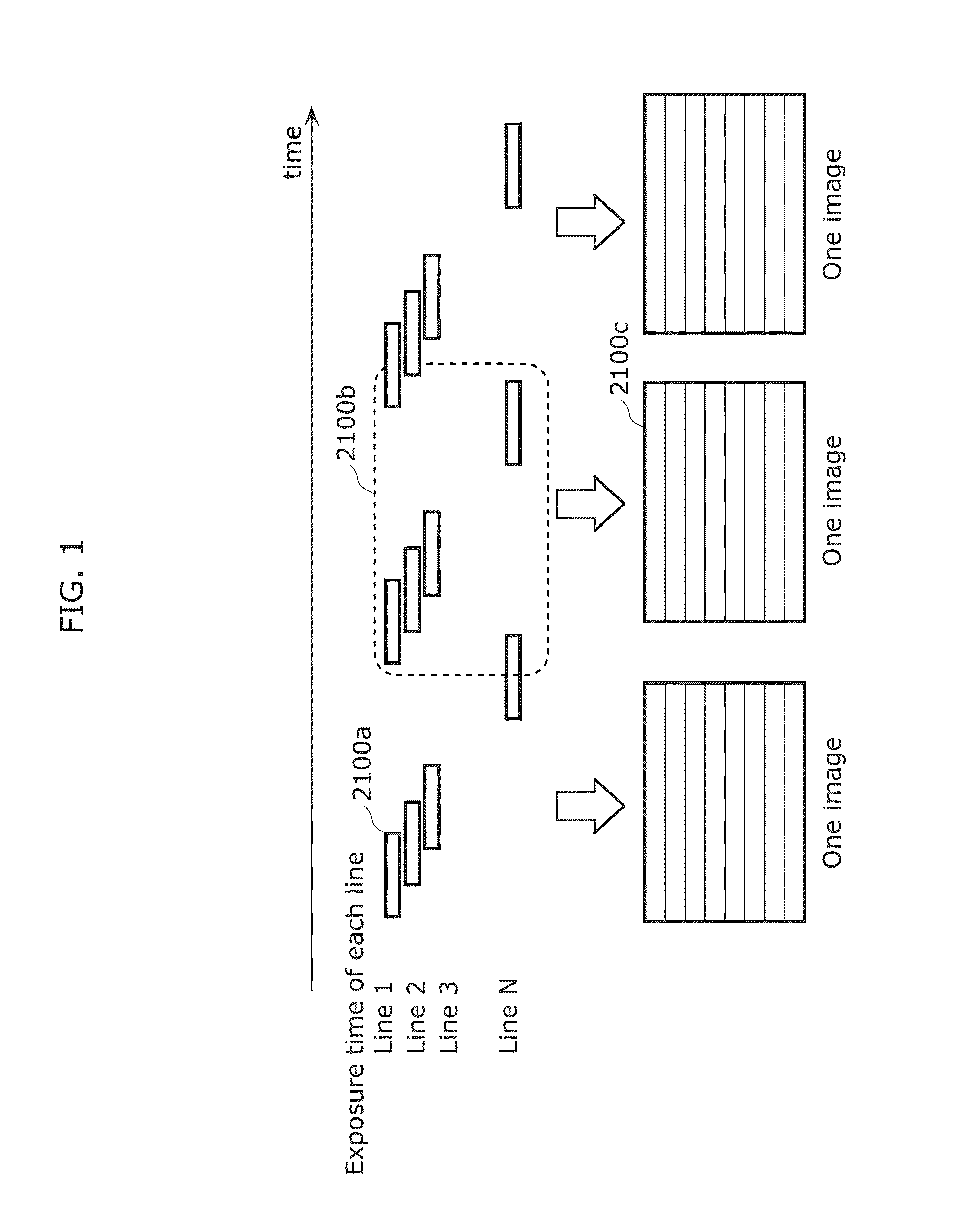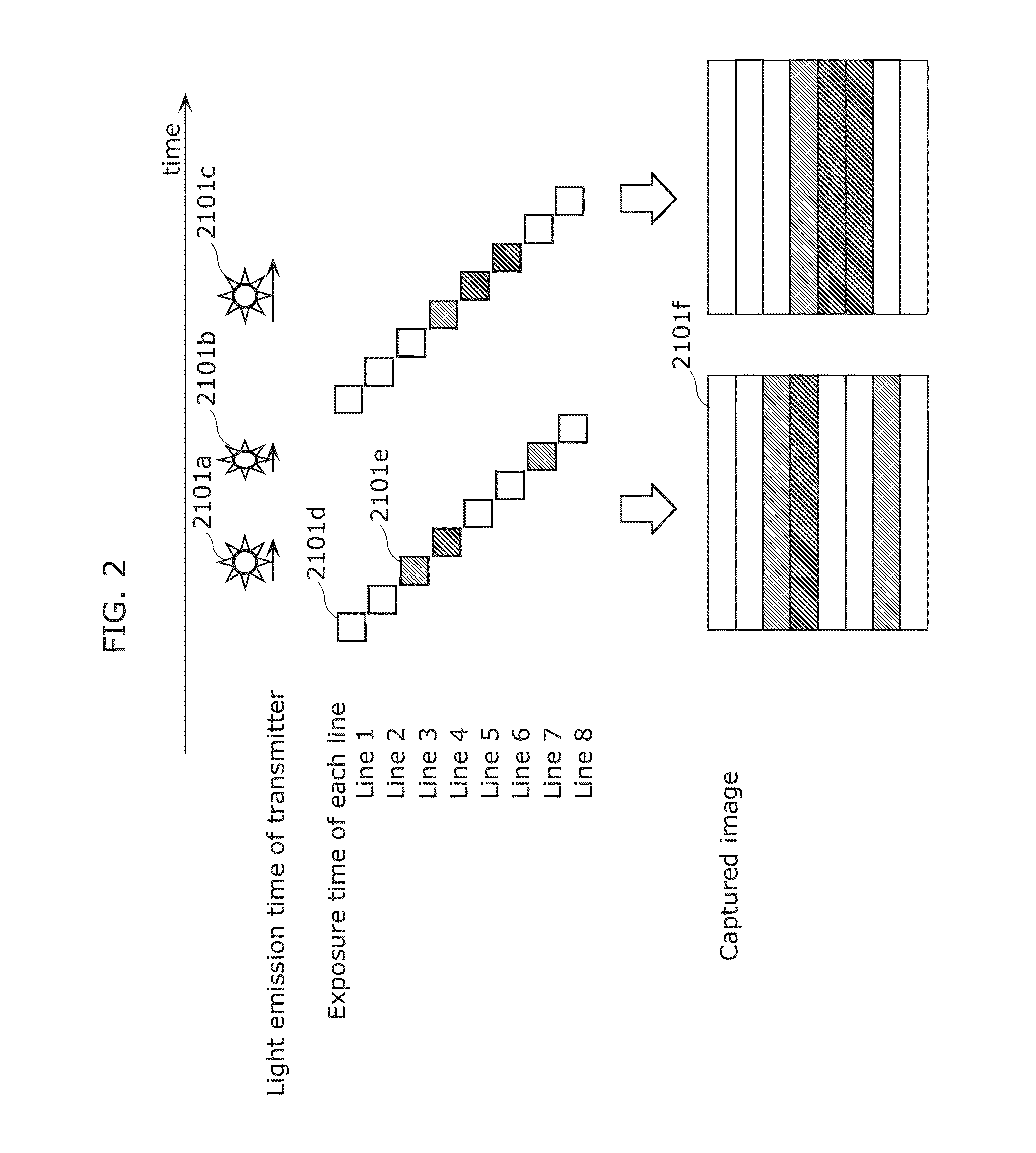Information processing method for generating encoded signal for visible light communication
a technology of information processing and encoded signals, applied in the direction of selective content distribution, electrical equipment, close-range type systems, etc., can solve the problems of insufficient computational performance of home electric appliances to have a communication function, limited conventional methods, and insufficient computational performance of home electric appliances to achieve a communication function. , to achieve the effect of low computational performan
- Summary
- Abstract
- Description
- Claims
- Application Information
AI Technical Summary
Benefits of technology
Problems solved by technology
Method used
Image
Examples
embodiment 1
[0509]The following describes Embodiment 1.
Observation of Luminance of Light Emitting Unit
[0510]The following proposes an imaging method in which, when capturing one image, all imaging elements are not exposed simultaneously but the times of starting and ending the exposure differ between the imaging elements. FIG. 1 illustrates an example of imaging where imaging elements arranged in a line are exposed simultaneously, with the exposure start time being shifted in order of lines. Here, the simultaneously exposed imaging elements are referred to as “exposure line”, and the line of pixels in the image corresponding to the imaging elements is referred to as “bright line”.
[0511]In the case of capturing a blinking light source shown on the entire imaging elements using this imaging method, bright lines (lines of brightness in pixel value) along exposure lines appear in the captured image as illustrated in FIG. 2. By recognizing this bright line pattern, the luminance change of the light ...
embodiment 2
[0542]This embodiment describes each example of application using a receiver such as a smartphone which is the information communication device K90 and a transmitter for transmitting information as a blink pattern of the light source such as an LED or an organic EL device in Embodiment 1 described above.
[0543]FIG. 7 is a diagram illustrating an example of each mode of a receiver in this embodiment.
[0544]In the normal imaging mode, a receiver 8000 performs imaging at a shutter speed of 1 / 100 second as an example to obtain a normal captured image, and displays the normal captured image on a display. For example, a subject such as a street lighting or a signage as a store sign and its surroundings are clearly shown in the normal captured image.
[0545]In the visible light communication mode, the receiver 8000 performs imaging at a shutter speed of 1 / 10000 second as an example, to obtain a visible light communication image. For example, in the case where the above-mentioned street lightin...
embodiment 3
[0694]This embodiment describes each example of application using a receiver such as a smartphone and a transmitter for transmitting information as a blink pattern of an LED, an organic EL device, or the like in Embodiment 1 or 2 described above.
[0695]FIG. 54 is a flowchart illustrating an example of operation of a receiver in Embodiment 3.
[0696]First, a receiver receives a signal by an illuminance sensor (Step 8101). Next, the receiver obtains information such as position information from a server, based on the received signal (Step 8102). The receiver then activates an image sensor capable of capturing the light reception direction of the illuminance sensor (Step 8103). The receiver receives all or part of a signal by the image sensor, and determines whether or not all or part of the signal is the same as the signal received by the illuminance sensor (Step 8104). Following this, the receiver estimates the position of the receiver, from the position of the transmitter in the captur...
PUM
 Login to View More
Login to View More Abstract
Description
Claims
Application Information
 Login to View More
Login to View More - R&D
- Intellectual Property
- Life Sciences
- Materials
- Tech Scout
- Unparalleled Data Quality
- Higher Quality Content
- 60% Fewer Hallucinations
Browse by: Latest US Patents, China's latest patents, Technical Efficacy Thesaurus, Application Domain, Technology Topic, Popular Technical Reports.
© 2025 PatSnap. All rights reserved.Legal|Privacy policy|Modern Slavery Act Transparency Statement|Sitemap|About US| Contact US: help@patsnap.com



